
Ngoc-Loi Nguyen
© All Righs Reserved

Euclidean geometry is constructive in asserting the existence and uniqueness of certain geometric figures, and these assertions are of a constructive nature: that is, we are not only told that certain things exist, but are also given methods for creating them with no more than a compass and an unmarked straightedge.
Euclid often used proof by contradiction. Euclidean geometry also allows the method of superposition, in which a figure is transferred to another point in space.


If  and
and ![]() and
and ![]() . Note 2 angles at 2
ends of the equal side of triangle.
. Note 2 angles at 2
ends of the equal side of triangle.
Then  are congruent
are congruent

There’s only 1 line parallel to AB from E, similarly only 1 line parallel to CA from F.
So these 2 triangles are congruent due to uniqueness property
If  and
and ![]() . Note the angle made by 2
equal sides of triangle.
. Note the angle made by 2
equal sides of triangle.
Then  are congruent
are congruent

There’s only 1 line from D to F to create this triangle.
So these 2 triangles are congruent due to uniqueness property
If  and
and 
Then  are congruent
are congruent
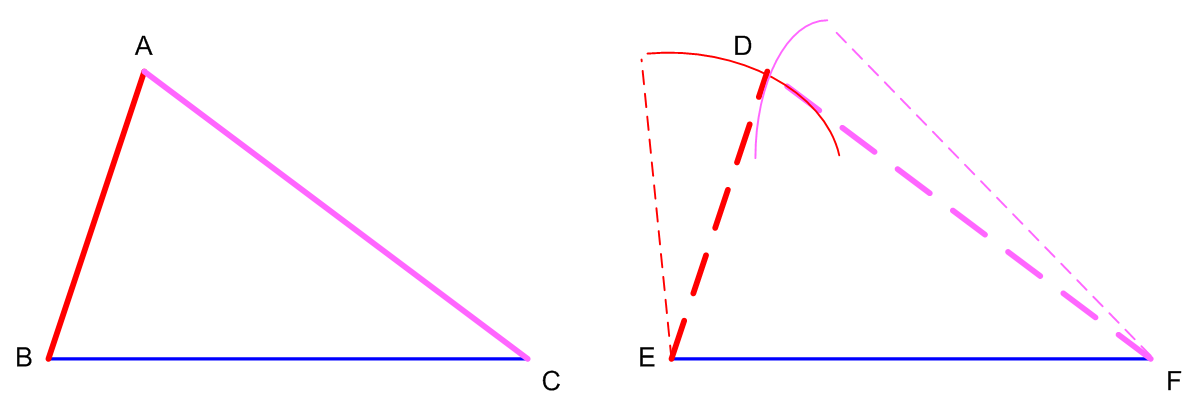
Draw a circle at E wirh radius ED and another one at F with radius FD, they cuts at single point D to create a unique..
So these 2 triangles are congruent due to uniqueness property
If  then
then 
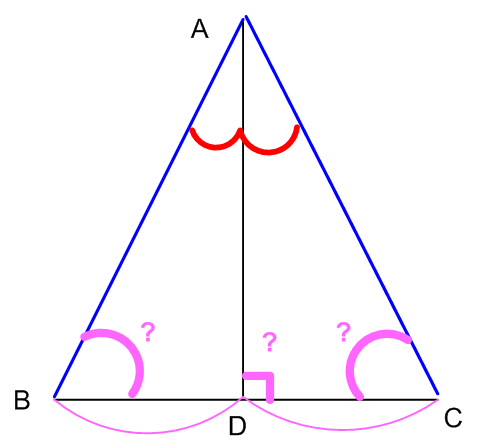
Let AD be bisector of ![]()
By SAS, we have
Hence

If  then AB = AC
then AB = AC
If AD is bisector of ![]() then
then 
From the Proof 1 above

If AD is bisector of BC then AD
is also bisector of ![]()
From the Proof 1 above

A parallelogram has 2 pairs of parallel sides
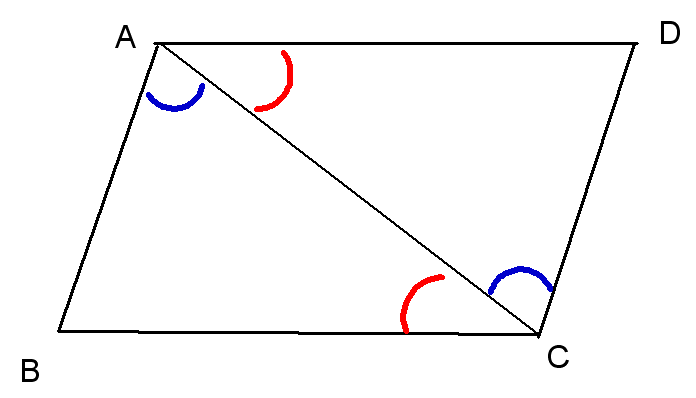
A Parallelogram has 2 pairs of equal sides
We have  by ASA so their corresponding sides
must be equal
by ASA so their corresponding sides
must be equal
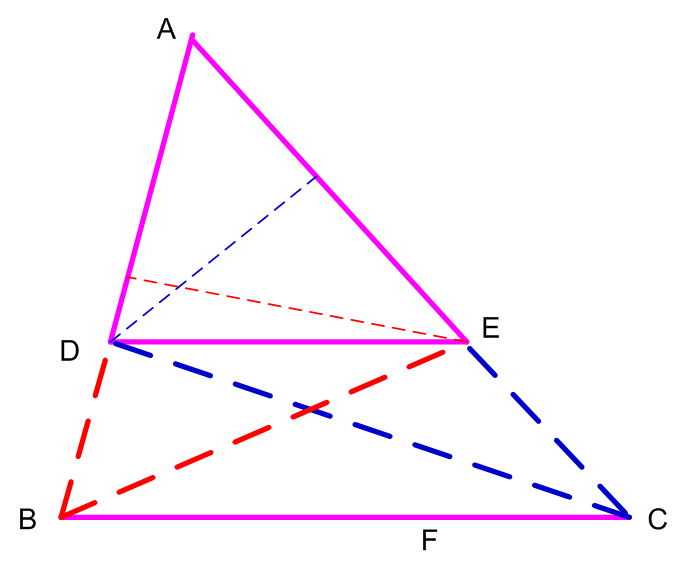
In a triangle, draw a line parallel to a side as in the figure above, we have

We will use the notation ![]() to denote the area of a
triangle ABC
to denote the area of a
triangle ABC
Since  have the same base and altitude
have the same base and altitude  , we have
, we have
 (1)
(1)
Since  has the same altitude, we have
has the same altitude, we have
 (2)
(2)
Similarly
 (3)
(3)
Hence, by Eq(1)

The Thales theorem can be expressed as

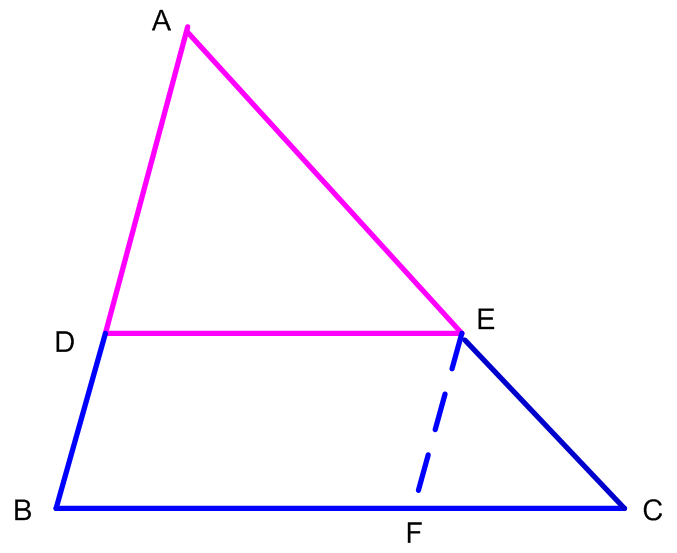
Draw EF parallel to AB, by Thales theorem, we have


Triangles are similar if they have 2 pairs of same angles  then we
have ratio of coressponding
then we
have ratio of coressponding


If similar triangles have 2 pairs of equal angles, then the
third pair must be equal, and we’re able to find a point D on AB and point E on
AC to have  . As Corollary, we have
. As Corollary, we have  , so
, so  . By Thales
theorem, we have
. By Thales
theorem, we have
 , but
, but  , then
, then

For a right triangle, square of hypothenus equal sum of square each sides
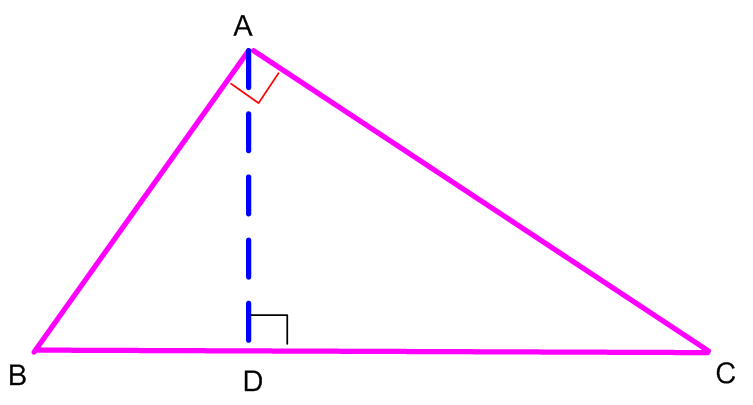
Let AD be perpendicular to BC. We have  , so,
hence by Thales theorem we have
, so,
hence by Thales theorem we have

Similarly, we have  , so
, so

Sum up these 2 equations, we have

All perpendicular bisectors of a triangle concur at one point called circumcenter as a center of its circumscribing circle.
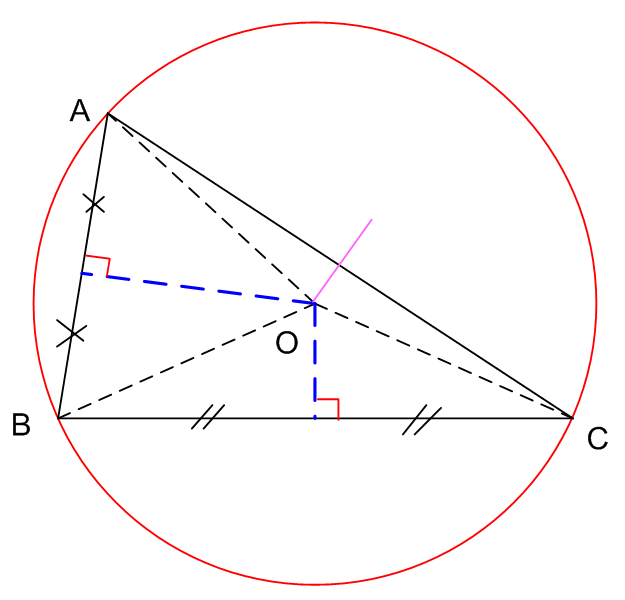
Bisectors of AB and BC meet at O. By ITT, we
have  ,
hence there’s a circle circumscribing
,
hence there’s a circle circumscribing ![]()
All 3 bisectors of 3 sides of a triangle concur at ONE point called circumcenter.
There’s a unique line from O to mid-point of AC. By ITT, it must perpendicular to AC.
The midpoint of hypotenuse of a right triangle is the center of its circumscribed circle
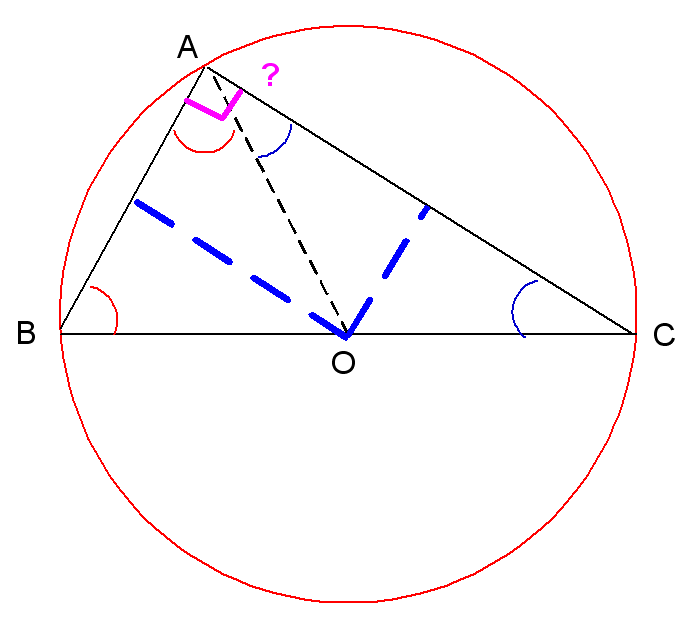
Draw a circle with diameter as one side of a triangle whose 3rd virtex in on the circle. Now we need to prove it is a right triangle.
By ITT, we have


As sum of all angles in a triangle is 1800, so

Hence it is a right triangle.
Let ABC be a triangle, and let D, E, F be points on lines BC, CA, AB, respectively. Lines AD, BE, CF concur iff (if and only if)
 (4)
(4)
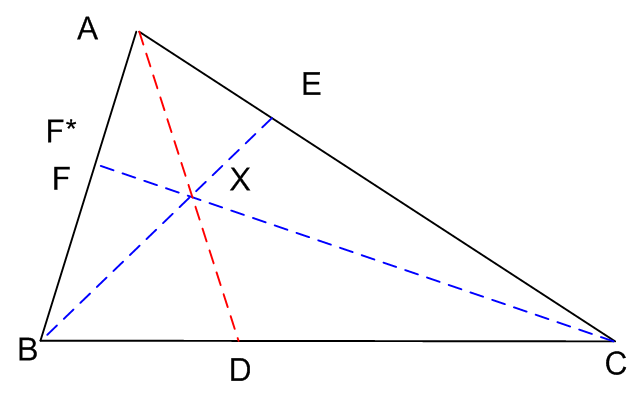
Let X be the point those 3 lines concur at, and let ![]() be
notation for area of a triangle ABC
be
notation for area of a triangle ABC
We have

Similarly

And

So

Conversely, given Eq.(4) and let AD cuts BE at X, then let CX cuts AB at F*, we have AD, BE and CF* concur, so
 (5)
(5)
Eqs.(4) & (5) give

In a triangle ABC, let P on BC such
that AP bisects ![]() , then
, then

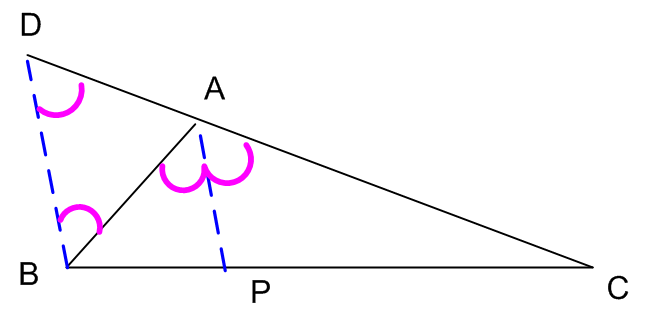
From B, draw a line parallel to AP and cuts AC at D,
then  so
so
![]() is
isosceles, hence
is
isosceles, hence 
Thales theorem give

3 bisectors of angles in a triangle concur at a point as center of its inner circle.

3 bisectors AP, BQ and CR have

So they concur at a point, say O, by Ceva theorem.
Let OI, OJ, OK be perpendicular to BC, CA, AB. By ASA, we have  ,
similarly
,
similarly 
All bisects of triangle sides concur at one point called Centroid at 1/3 from the base.
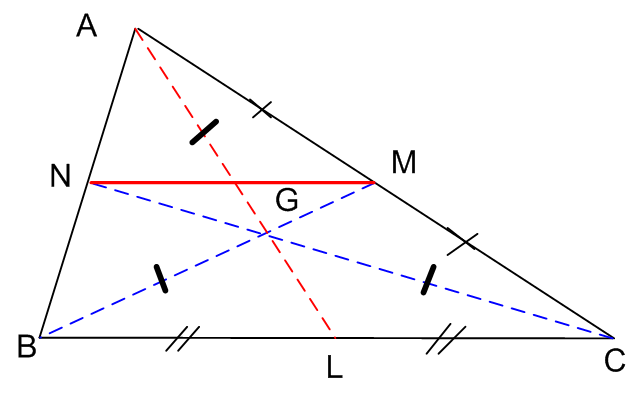
Let L, M and N be midpoints of BC, AC and AB. By Ceva
theorem, these 3 lines must concur at a point, say G. Thales theorem
gives  ,
so
,
so  by
a scale of 2 by ASA theorem. Thus
by
a scale of 2 by ASA theorem. Thus  and
and  . Similarly, we have
. Similarly, we have  .
.
All altitudes of a triangle meet at one point called orthocenter.
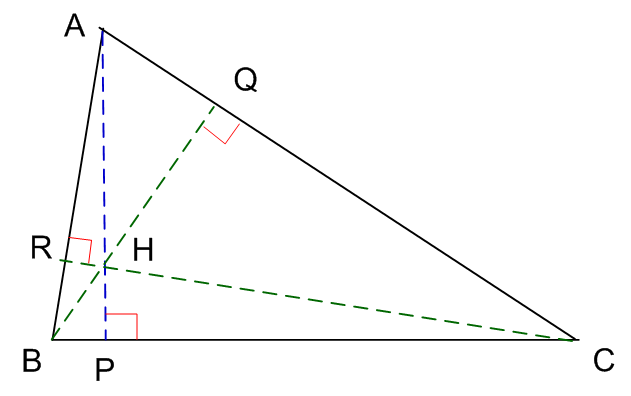
We have



So

Thus they concur by Ceva theorem
Let O, G, H be circumcenter, centroid, orthocenter of triangle ABC, then they are in line such that

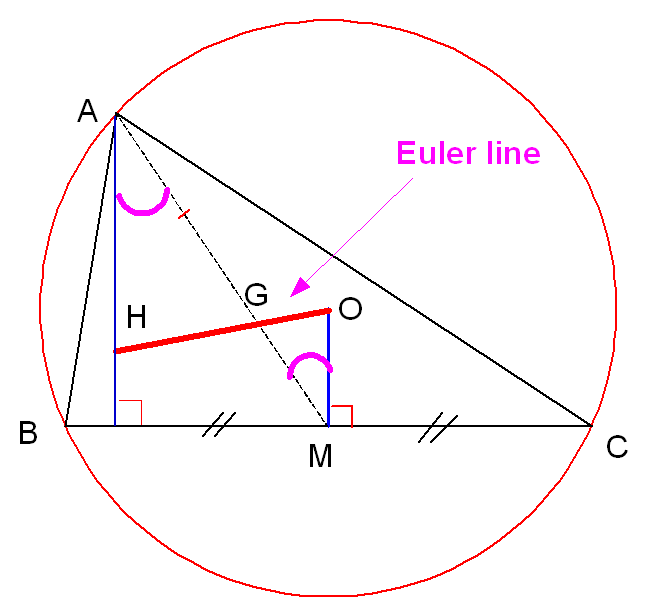
Let O be circumcenter, M be midpoint of BC and G be
centroid. Extend OG such that GH = 2 GO. Then we have  due to SAS with
scale of 2, hence
due to SAS with
scale of 2, hence  , thus AH//OM. We have
, thus AH//OM. We have  , ie AH is
an altitude of BC. Similarly we have BH and CH be altitudes of AC and AB
respectively.
, ie AH is
an altitude of BC. Similarly we have BH and CH be altitudes of AC and AB
respectively.
OGH is known as Euler line